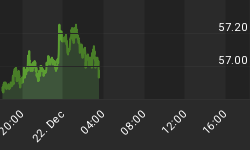The US trade deficit soared by 11% in September to a record $66.1 billion from a revised $59.3 billion (initial $59.0 billion) in August. Imports grew 2.4% to $171.3 bln --highest % rise since Oct 04-- while exports fell 2.58% to $105.2 billion, the biggest percentage decrease since September 2001.
The 72% drop in aircraft exports resulting from a strike at Boeing was instrumental in the 2.6% drop in exports.
The oil picture was mixed as imports of petroleum products rose 4.0% to $23.8 bln, while crude oil imports fell 7% to $16 billion due to a 2.2% drop in volume resulting from closures in the ports of the South East - particularly New Orleans . The combined effect of the overall decline in total; imports coupled with the rise in petroleum imports has increased the share of petroleum share of total imports to a record 14%. The increase in petroleum imports accounted for 25% of the increase in total imports, less than the 66% in August.

The fact that total petroleum imports rose despite a decline in crude oil imports which was a result of port disruptions implies that imports could accelerate further once the ports in New Orleans are open. It may be argued that the 4.4% decline in October import prices may stabilize the October trade gap. But the expected rebound in import volumes should maintain the import bill elevated. Since the quantity of crude imports fell to 278 mln barrels in September, well below the 318 mln average between Jan and Aug, we would expect a rise of at least 30-40 million barrels.
On the positive side, the BEA noted that the current account deficit for Q3 should stabilize as a result of a boost in unilateral transfers from insurance and reinsurance claims received by US companies from foreign insurance. The unilateral account should also be boosted by donations from abroad for hurricane relief.
10-year Auction Saves the Day Again

The 10-year auction once again saved the day as it drew a record high 55% participation from foreign investors in the $13 billion issue, following poorly subscribed 3 and 5-year auctions earlier this week. This is a deja-vu from the August auction when the 10-year auction in August saw a surge in foreign participation to 46%, following the decline in the prior auction to 10%. The rise in the August 10-year auction occurred despite lackluster 3 and 5-year auctions fore the same month. With 10-year yields at 8-month highs, foreign appetite is a major catalyst
Dollar's Structural Concerns Back in Play? Not Yet
Today's trade report presents raises the question whether the deficit is showing its period increase after a 10-12 month consolidation around the $57 billion mark. As the chart above shows (red), the monthly deficit figures have a way of consolidating in a range for 6-12 months before a given catalyst lifts it up to the next range. Since Jan 2002, this catalyst has been the increase in oil prices. The prospects of a retreat back to the low $50s are primarily dependent on the extent of aircraft exports and crude oil imports (rather than solely petroleum).
The combination of renewed acceleration in the US trade deficit with the looming conclusion of the Fed's tightening campaign could pave the way for the next dollar decline. This would be especially compounded by if US GDP growth drops below the 3.0% handle by mid year. Today's September deficit could reduce as much as 0.5% of GDP, thus dragging the advanced 3.8% Q3 release back to 3.3% in the event that there is no continued boost in government spending as was the case in the advanced report.
In the shorter-term, we stick with downgraded month-end EURUSD forecast to $1.1650 before a retreat back to the $1.20s by year end. Key foundation starts at $1.16--38% retracement of the 82.27-1.3664 rally. Prolonged downside is limited to $1.15 after which we a gradual stabilization once the Fed is increasingly perceived as nearing the end of the rate hikes. But even if rates will peak at 4.50% in January, the dollar could begin tapering off once economic growth retreats below the 3.0% handle in Q2-Q3 2007. Chances of a euro rebound seen capped at $1.1870, followed by $1.1930.















